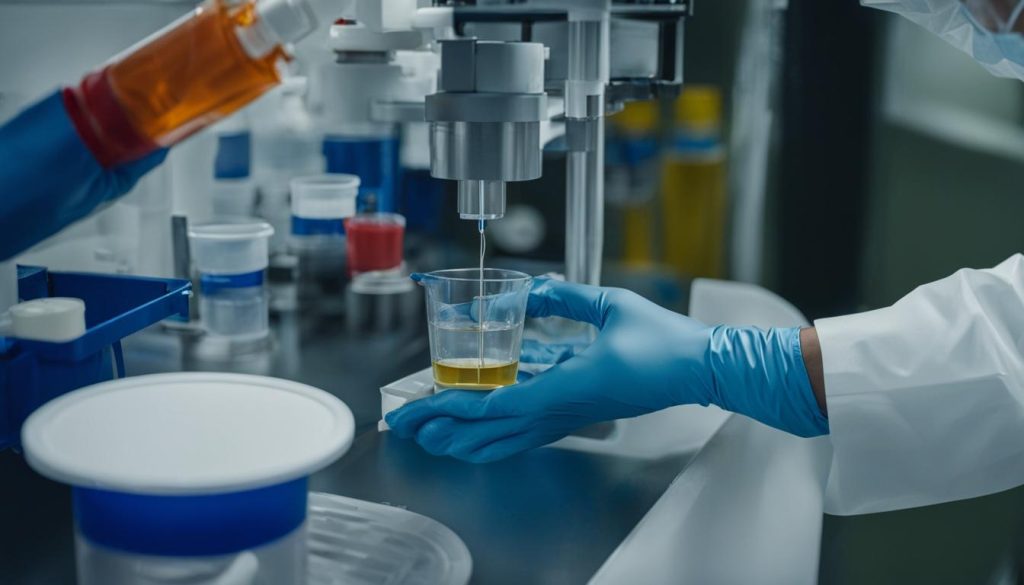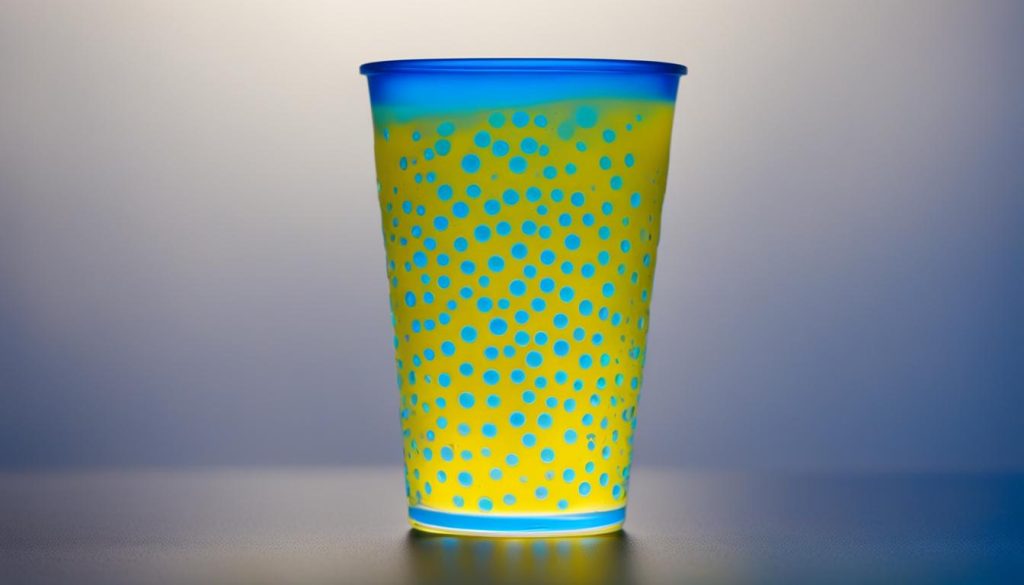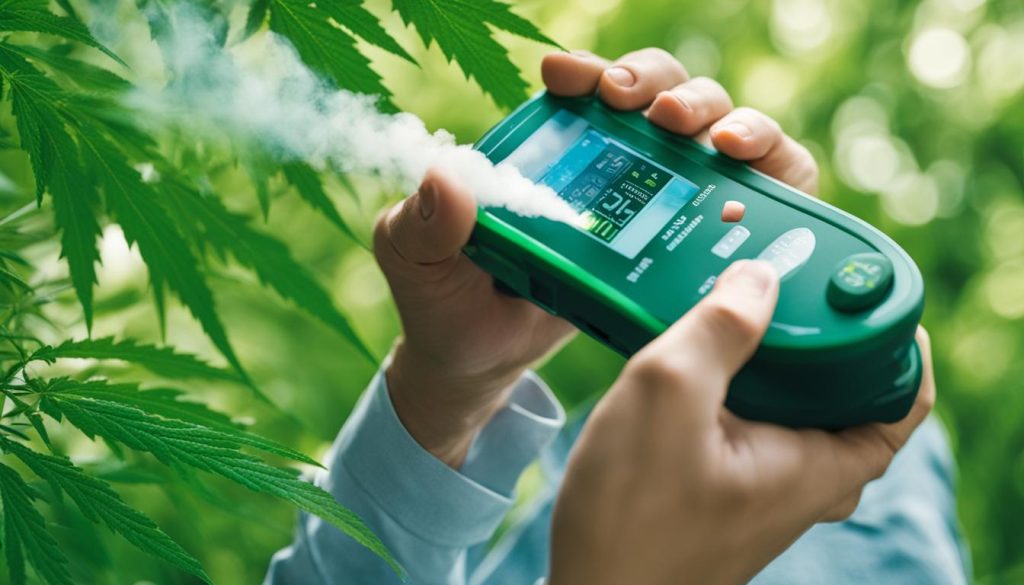
Welcome to our comprehensive guide on drug test detection timelines for single marijuana use. If you’ve recently consumed cannabis and are concerned about the potential implications on a drug test, we’ve got you covered. In this article, we’ll explore the detection windows for THC, the main psychoactive compound in marijuana, in different types of tests. Whether you’re facing a urine test, saliva test, hair test, or blood test, we’ll provide you with the information you need to understand the effectiveness and duration of each test. Stay informed and be prepared for any drug screening situation.
Key Takeaways
- THC, the chemical in cannabis, can be detected in urine, blood, and hair for varying periods of time after use.
- Urine tests can detect THC for approximately 1-30 days, while saliva tests have a shorter detection window of a few hours.
- Hair tests, being the most sensitive, can detect THC for up to 90 days.
- The frequency of cannabis use and the amount of body fat can affect the detection window of drug tests.
- There is no reliable method to speed up the metabolism and excretion of THC from the body.
Factors Affecting THC Detection in the Body
When it comes to detecting THC, the active compound in marijuana, in the body, several factors come into play. These factors can influence the accuracy and reliability of drug tests, particularly urine tests, which are the most common method of detection.
One of the main factors is the individual’s amount of body fat. THC is stored in fat cells, meaning that individuals with higher body fat concentrations may have THC detectable in their system for longer periods of time. Other factors, such as sex, hydration levels, exercise, and metabolism, can also affect the detection of THC in the body.
It is important to note that there is no foolproof method for speeding up the elimination of THC from the body. Despite various detoxification methods and products available in the market, their effectiveness is questionable, and there is no scientific evidence to support their claims. The most reliable way to ensure a clear urine test result is to abstain from marijuana use for a sufficient amount of time.
| Factor | Influence on THC Detection |
|---|---|
| Body fat concentration | Higher body fat may prolong THC detection |
| Sex | No significant impact on THC detection |
| Hydration levels | No significant impact on THC detection |
| Exercise | No significant impact on THC detection |
| Metabolism | No significant impact on THC detection |
“It is important to note that there is no foolproof method for speeding up the elimination of THC from the body.”
While the individual factors mentioned above can affect THC detection, the most reliable factor remains the time elapsed since the last marijuana use. THC metabolites gradually clear from the body over time, and the longer the period of abstinence, the more likely it is to pass a urine test successfully.
Understanding these factors helps in navigating drug test detection timelines and making informed decisions regarding marijuana use and its potential impact on drug screening results.
Detection Timelines for Different Cannabis Tests
When it comes to detecting cannabis use, different types of drug tests have varying detection windows. Understanding these timelines is crucial for individuals facing drug screening or employers implementing testing protocols. Here, we outline the detection windows for various cannabis tests, including urine, saliva, hair, sweat, and blood tests.
Table 1: Detection Windows for Different Cannabis Tests
| Test Type | Detection Window |
|---|---|
| Urine Test | Approximately 1-30 days after use |
| Saliva Test | Up to 24 hours |
| Hair Test | Up to 90 days |
| Sweat Test | 7-14 days |
| Blood Test | A few hours |
As shown in Table 1, urine tests are the most common type of drug test and can detect cannabis use for approximately 1-30 days after consumption. Saliva tests have a much shorter detection window, typically limited to 24 hours. Hair tests, on the other hand, are the most sensitive and can detect cannabis use for up to 90 days, making them ideal for detecting long-term patterns of drug use. Sweat tests, which are less commonly used, can detect cannabis in sweat for 7-14 days. Finally, blood tests have the shortest detection window, typically only detecting THC for a few hours after use.
It is important to note that these detection windows can vary based on factors such as the amount and frequency of cannabis use, metabolism, and individual differences in drug metabolism. Additionally, the purpose of the drug test should be considered when choosing the most appropriate testing method and interpreting the results accurately.
Overall, understanding the detection windows for different cannabis tests is crucial for individuals and organizations implementing drug screening programs. By being aware of these timelines, individuals can make informed decisions regarding their cannabis consumption, while employers can ensure a fair and accurate screening process.
Methods to Speed Up THC Elimination from the Body
When it comes to passing a urine test for THC, there are several methods that may help speed up the elimination of the cannabis compound from the body. While there is no definitive way to guarantee a passing result, these strategies can potentially enhance the chances of successful urine test results.
Regular exercise: Engaging in regular physical exercise can potentially aid in breaking down fat cells, where THC is stored, and releasing the compound into the bloodstream for excretion. However, it is important to note that exercising too close to the time of a drug test may lead to a positive result.
Dietary and hydration habits: Following a healthy dietary plan that includes fiber-rich foods can promote digestion and bowel movements, which can help eliminate THC metabolites from the body. Additionally, drinking sufficient amounts of water can assist in flushing out THC through urine and bowel movements.
Time: The most crucial factor in speeding up THC elimination is the duration between the last exposure to cannabis and the time of testing. The longer the time gap, the greater the likelihood of clear test results.
| Methods | Effectiveness |
|---|---|
| Regular exercise | May aid in breaking down fat cells and releasing THC for excretion, but exercising close to a test can lead to a positive result. |
| Dietary and hydration habits | A healthy diet and sufficient water intake can promote digestion and bowel movements, aiding in the elimination of THC metabolites. |
| Time | The longer the gap between exposure to cannabis and testing, the greater the chance of clear test results. |
Detection Windows Based on Frequency of Cannabis Use
When it comes to detecting THC in urine tests, the frequency of cannabis use plays a significant role in determining the detection window. Infrequent users who smoke marijuana once or twice may only have THC detectable in their urine for a few days after use. On the other hand, frequent users who consume cannabis regularly may show traces of the drug for up to a month.
Chronic, heavy cannabis use can lead to THC accumulation in fatty tissues, resulting in a longer detection window. The cannabis compound THC is stored in fat cells and metabolized slowly in individuals with higher body fat concentrations. This is why frequent users may have a longer detection window compared to occasional users with lower body fat levels.
When undergoing a urine test, it’s crucial to consider the frequency of cannabis use to determine the appropriate timeframe for drug testing. Understanding the detection windows based on frequency can help individuals make informed decisions regarding drug use and the potential consequences of a positive urine test.

Table: Detection Windows Based on Frequency of Cannabis Use
| Frequency of Cannabis Use | Detection Window |
|---|---|
| Infrequent Use (1-2 times) | Few days |
| Frequent Use (Regular consumption) | Up to 1 month |
| Chronic, Heavy Use | Extended detection window |
Different Types of Marijuana Drug Tests and Their Detection Times
When it comes to drug testing for marijuana, there are various types of tests available, each with its own detection window. These tests include urine, hair, blood, and saliva tests, each offering unique advantages and limitations.
Urine Tests
Urine tests are the most common method of drug testing for marijuana. They can detect the presence of THC and its metabolites in the urine for up to 30 days after use. This makes urine tests an effective way to identify recent or past marijuana use.
Hair Tests
Hair tests are the most sensitive type of drug test for marijuana. They can detect the presence of THC and its metabolites in the hair for up to 90 days after use. This long detection window makes hair tests particularly useful for identifying chronic or heavy marijuana use.
Blood Tests
Blood tests for marijuana have a much shorter detection window compared to urine and hair tests. They can only detect THC for a few hours after use. Blood tests are often used in situations where recent marijuana use needs to be determined, such as in the case of accidents or impairment.
Saliva Tests
Saliva tests are another option for marijuana drug testing. They can detect THC in the saliva for up to 24 hours after use. Saliva tests are commonly used in roadside screenings or situations where recent marijuana use needs to be identified quickly.
Each type of drug test has its own detection window, which can vary depending on factors such as the frequency of marijuana use and individual metabolism. It’s important to consider the specific requirements and goals of the drug test when choosing the appropriate method for marijuana detection.

| Drug Test | Detection Window |
|---|---|
| Urine Test | Up to 30 days |
| Hair Test | Up to 90 days |
| Blood Test | Few hours |
| Saliva Test | Up to 24 hours |
A table summarizing the detection windows for different types of marijuana drug tests.
When Are Marijuana Drug Tests Used?
Marijuana drug tests are commonly used in various situations and settings to ensure safety and maintain a drug-free environment. These tests are typically administered in the following scenarios:
- Workplace cannabis use: Many employers conduct drug tests to identify employees who may be using marijuana, especially in industries that prioritize safety, such as construction, transportation, and healthcare. By detecting marijuana use, employers can take appropriate measures to protect the well-being of their employees and maintain a productive work environment.
- Safety incidents: After accidents or safety incidents occur in the workplace, drug tests may be conducted to determine if marijuana use played a role. This can help identify potential factors contributing to the incident and prevent similar occurrences in the future.
- Drug testing reasons: Drug tests are also conducted for routine screening purposes, court-ordered sentencing requirements, and drug rehabilitation programs. These tests serve to monitor an individual’s drug use, ensure compliance with legal obligations, and provide necessary support and intervention for those struggling with marijuana addiction.
Drug testing plays a crucial role in promoting a safe and drug-free environment in various settings, including workplaces and rehabilitation programs. By detecting marijuana use, these tests help employers and organizations identify individuals who may require assistance or intervention, ensuring the well-being and productivity of all individuals involved.
It is important to note that the specific policies and regulations regarding marijuana drug testing may vary depending on the jurisdiction and organization. Employers and individuals should familiarize themselves with the applicable laws and guidelines to understand the circumstances under which drug tests may be conducted and the potential consequences of positive results.
| Reasons for Marijuana Drug Tests | Examples |
|---|---|
| Workplace cannabis use | Construction sites, transportation companies, healthcare facilities |
| Safety incidents | Workplace accidents, equipment malfunctions, safety breaches |
| Drug testing reasons | Routine screening, court-ordered sentencing, rehabilitation programs |
The Advantages of Cannabis Breathalyzer Testing
When it comes to marijuana detection, cannabis breathalyzer testing offers unique advantages over other types of drug tests. Unlike urine, oral fluid, or hair tests that can detect THC and its metabolites for days, weeks, or even months after use, breath testing provides a shorter detection window, focusing on recent marijuana consumption. This makes it a valuable tool for assessing recent cannabis use and its potential impact on workplace performance and safety.
One of the key advantages of cannabis breathalyzer testing is its ability to detect recent marijuana use within a narrow timeframe of 2-3 hours. This aligns with the typical workday, allowing employers to assess whether an employee is under the influence of marijuana during working hours. By providing real-time results, breath testing provides insight into impairment levels and helps employers make informed decisions regarding workplace safety.
In addition to the shorter detection window, cannabis breathalyzer testing also offers ease of use and non-invasiveness. Unlike urine tests that require a sample collection and subsequent analysis, breath testing only requires a simple breath sample to determine the presence of THC. This makes it a convenient and less intrusive option for testing individuals for recent marijuana use.

The future of marijuana testing and roadside detection is also focused on developing reliable tests that can detect recent marijuana use or intoxication. Research is underway to create marijuana breathalyzers that can accurately measure THC levels within hours of smoking. Saliva tests and other methods are also being explored to detect edible marijuana consumption. These advancements in testing technology aim to provide more accurate and efficient detection methods for law enforcement and other organizations concerned with marijuana use and impairment.
The Future of Marijuana Testing and Roadside Detection
Ongoing research is constantly pushing the boundaries of marijuana testing and roadside detection methods. As the cannabis industry continues to evolve, the need for accurate and efficient detection of marijuana use and impairment becomes more crucial. This has led to advancements in technology, particularly in the development of innovative testing methods.
One of the most anticipated breakthroughs is the development of marijuana breathalyzers, which aim to detect recent marijuana use or intoxication. These devices can detect the presence of THC, the psychoactive compound in marijuana, within hours of smoking. Similar to alcohol breathalyzers, these devices provide law enforcement with a tool to assess impairment and ensure road safety.
In addition to breathalyzers, saliva testing is also being explored as a viable method for marijuana detection. This method is especially useful in detecting the consumption of edible marijuana, which can be challenging to detect through other testing methods. Research is ongoing to improve the accuracy and reliability of saliva tests, allowing for more effective monitoring of marijuana use.
As we pave the way for the future of marijuana testing, it is important to continue investing in research and development. By enhancing our testing capabilities, we can better address the challenges associated with marijuana use, both in terms of workplace safety and public safety on the roads. These advancements in detection technology will undoubtedly have a significant impact in shaping future practices and policies surrounding marijuana use.
FAQ
What is the detection window for THC in urine?
THC can be detected in urine for approximately 1-30 days after use, depending on factors such as body fat, frequency of use, and the sensitivity of the drug test.
How long can THC be detected in saliva?
THC can be detected in saliva for a few hours after use.
How long can THC be detected in hair?
Hair tests, being the most sensitive, can detect THC for up to 90 days.
What factors can affect the detection of THC in the body?
Factors such as body fat, sex, hydration levels, exercise, metabolism, and the strength of the THC dose can influence the detection of THC in the body.
Can THC be eliminated from the body faster?
While there is no reliable method to speed up the elimination of THC from the body, regular exercise, following a healthy diet, consuming fiber, and drinking sufficient water may aid in the elimination process.
How does the frequency of cannabis use affect drug test detection?
The frequency of cannabis use can impact the detection window, with occasional users having a shorter window compared to frequent users. Chronic, heavy cannabis use can result in a longer detection window.
What are the different types of drug tests for detecting marijuana?
Urine, hair, blood, saliva, and sweat tests are commonly used to detect marijuana. The detection times vary for each type of test.
When are marijuana drug tests used?
Marijuana drug tests are used for workplace safety, routine screening, court-ordered sentencing requirements, drug rehabilitation programs, and monitoring personal use.
What are the advantages of cannabis breathalyzer testing?
Cannabis breathalyzer testing can detect recent marijuana use within 2-3 hours, providing a shorter detection window compared to urine, oral fluid, and hair tests. This makes it beneficial for assessing recent cannabis use and its potential impact on workplace performance and safety.
What is the future of marijuana testing and roadside detection?
Ongoing research is focused on developing reliable roadside tests, including marijuana breathalyzers and saliva tests for edible marijuana consumption. These advancements aim to provide more accurate and efficient detection methods for law enforcement and organizations concerned with marijuana use and impairment.















